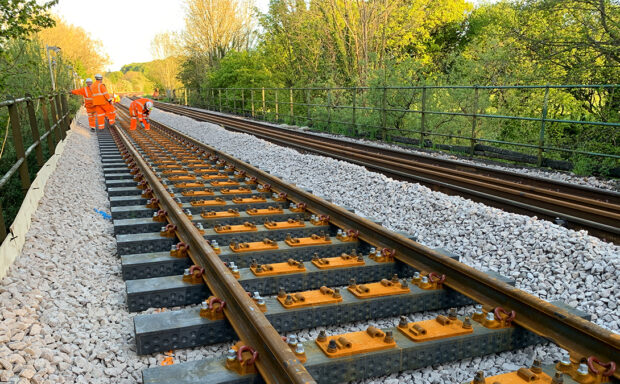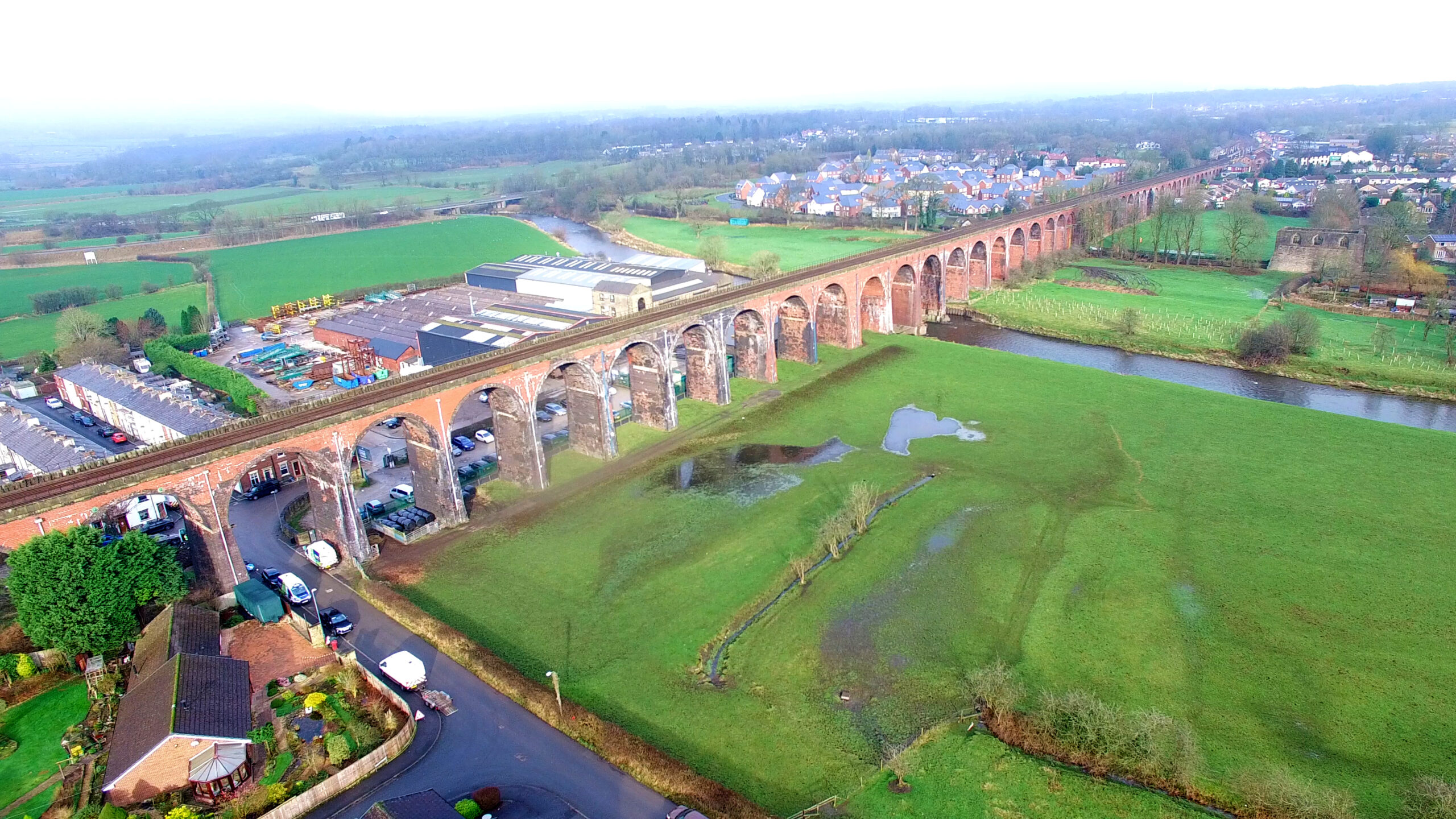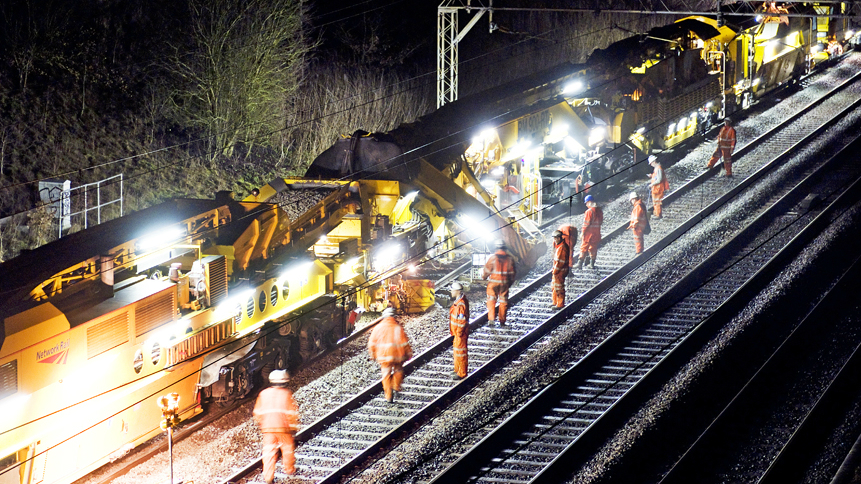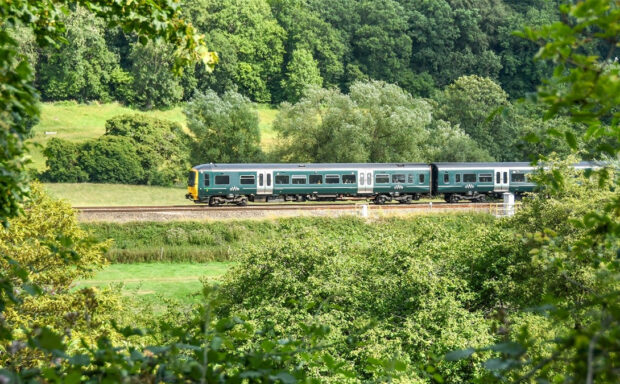Three storms in just five days caused widespread disruption to the railway. We’ve worked round the clock to keep you safe and get you moving again.
Please check National Rail Enquiries for up-to-date travel information before you start your journey.
We know delays are frustrating and we do everything we can to avoid them but keeping you safe is our priority. Sometimes this means imposing temporary speed restrictions (slowing down trains) or closing certain lines.
Storms Dudley, Eunice and Franklin have battered the railway in the past week, with Eunice labelled the UK’s worst storm in more than 30 years.
We’ve been out in the extreme weather making the railway safe again for you despite the severe conditions.
Here are nine things that happened as the storms swept across Britain …
1 – Full route closures:
On Friday, the rail industry had to cancel or delay the most services due to the risks the severe weather posed – and the extensive damage caused. We stopped all services across entire regions, including Scotland and Wales and Western. This was the first time in our history that Wales suspended all services across the country.
2 – No trains in or out of London:
The damage also meant the rail industry had to suspend services in and out of major London stations on Friday. These included London Paddington, London Waterloo, London Euston, London King’s Cross, London Charing Cross, and many routes from London Bridge, London Victoria and London Liverpool Street.
3 – Speed restrictions:
We slowed down trains as we faced up to 90mph winds in some parts of Britain. These speeds can make trains miss their station stops or even pass at a stop signal, risking your safety. We put in place many speed restrictions – mostly at 50mph – for trains to travel at safer speeds.
Find out more about why we use speed restrictions.
4 – Flying roof:
High windspeeds also affect our stations and buildings. At our depot in Banbury in Oxfordshire, the wind tore off the roof, which landed onto the adjacent track and led to the suspension of all services in the area. Our teams had to quickly assess the damage and remove the debris.
Preston station in Lancashire closed on Friday and Saturday as the storm ripped away roof tiles, posing a risk to anyone below. Our access teams worked on repairing the roof all weekend.
*Footage from Chiltern Railways.
5 – Trampolines, trampolines, trampolines:
Trampolines became a common sight across our social media channels. We removed many trampolines and items of garden furniture – which we urge people living near the railway to secure to the ground – from the tracks. Meanwhile, our chainsaw gangs dealt with the large numbers of trees that had fallen onto the railway.
At Carmarthen railway station in West Wales, the station roof blew onto a train while it sat at a platform.
6 – Damage to overhead line equipment:
Overhead power lines are the cables above the track that power electric trains in most of the country. Damage to the overhead lines stops them from powering electric trains. Overhead lines take time to repair because they require our specialist teams to travel to site and carefully remove the entangled branches or debris.
Dudley and Eunice caused severe damage to overhead line equipment, with trees and other debris tearing them down.
The line at St Albans in Hertfordshire closed for two days after a large tree tore down the overhead wires on Wednesday. We removed the tree just after 11pm on Wednesday but engineers needed to work in calmer conditions to complete the repairs. Our teams worked tirelessly through Thursday night to successfully repair the equipment.
7 – Danger! High voltage:
Up to 25,000 volts run through our overhead wires. Up in Beattock in Dumfries and Galloway, the wind uprooted trees, one of which caught fire from the electricity:
8 – Red-hot rails:
In Poole, Dorset, the track caught fire after debris collided with a conductor rail – a part of the track that powers electric trains. The force of the collision and trapped debris caused the rail to combust and ignite. Thankfully, our teams were out there immediately to put out the blaze:
9 – Aviation assessment:
Our Air Operations team surveyed the West Coast Main Line to identify any weakened trees at risk of falling onto the railway and spotted five in Lockerbie in Dumfries and Galloway. We got on site quickly to manage the hazardous trees and protect the railway.
What’s next?
Our teams have been out all across Britain, braving the weather to repair the damage caused by the storms. We’re clearing debris, fixing overhead wires and working hard to get your services back to normal.
This is a huge clean-up operation so please check your journeys before you travel with National Rail Enquiries or your train operator.




